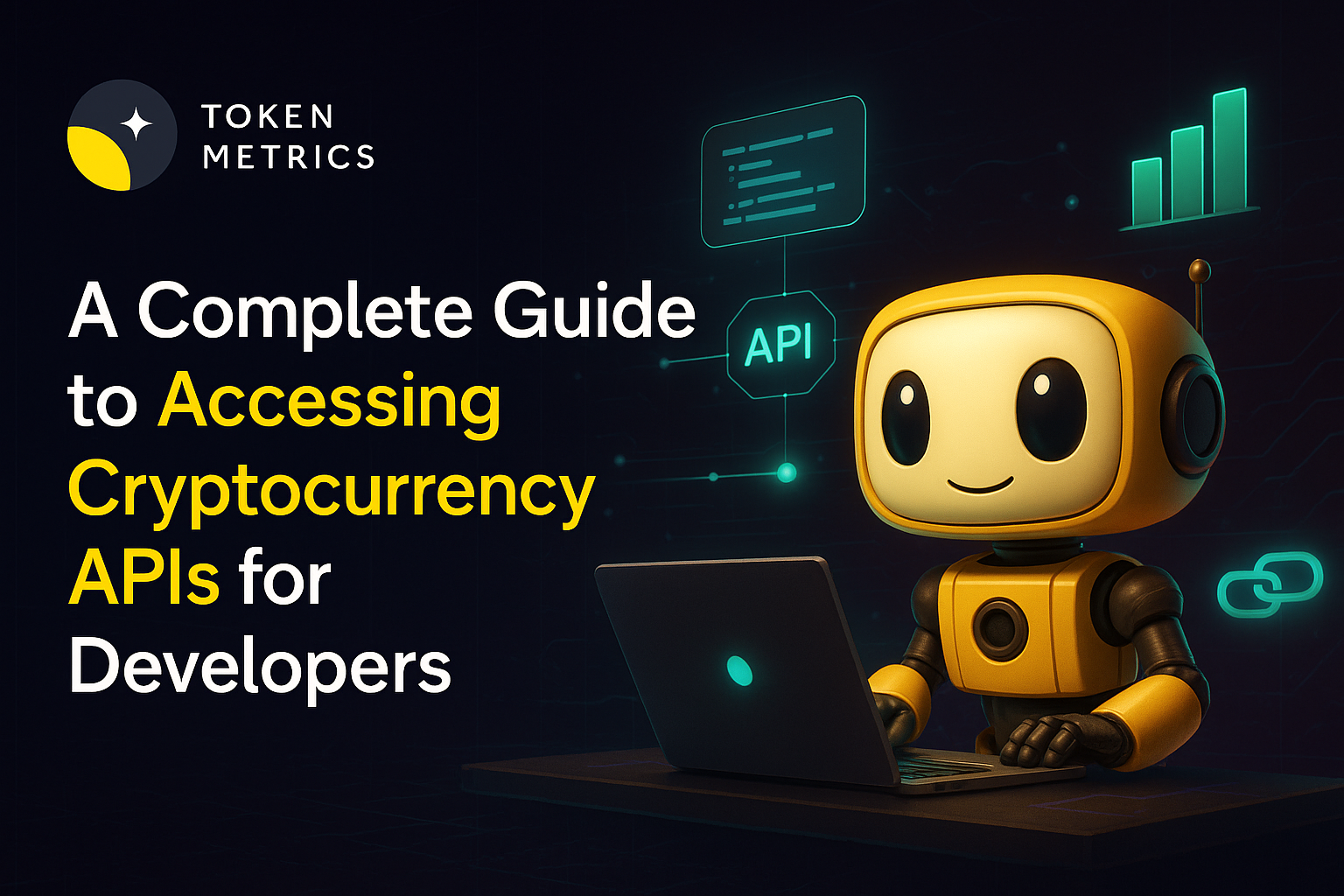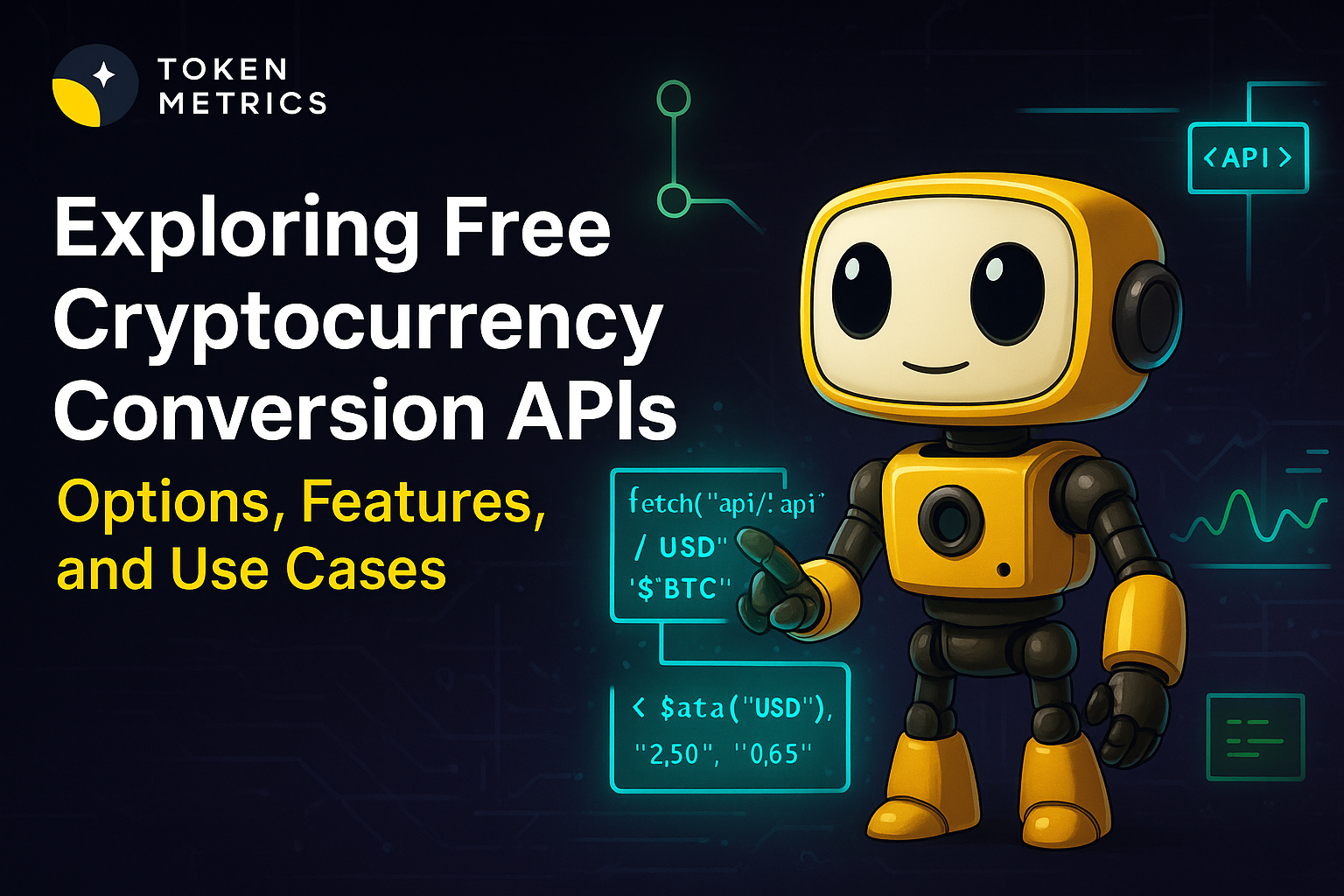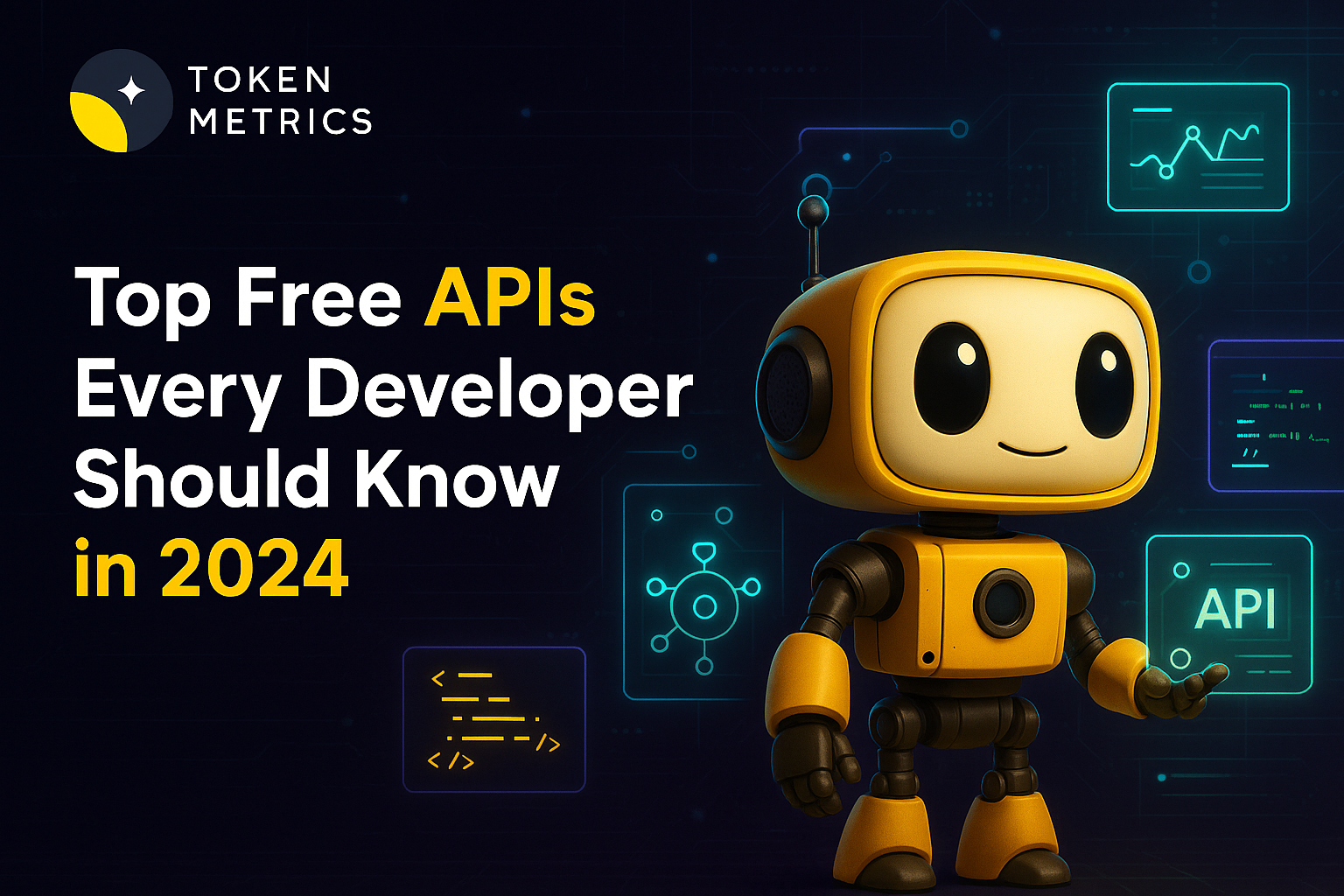
What is Cryptojacking? - A Comprehensive Guide

In today's digital age, cybercriminals are constantly coming up with new ways to exploit unsuspecting victims. One such method is cryptojacking, a type of cybercrime that involves the unauthorized use of people's devices for cryptocurrency mining.
In this comprehensive guide, we will learn everything about cryptojacking, exploring what it is, how it works, and how you can protect yourself from falling victim to this insidious threat.
What is Cryptojacking?
Before we delve into the intricacies of cryptojacking, it is essential to have a basic understanding of cryptocurrency.
Cryptocurrency refers to digital or virtual money that takes the form of tokens or "coins." While Bitcoin is the most well-known cryptocurrency, there are approximately 3,000 other forms in circulation.
These digital currencies operate using a distributed database called the blockchain, which records all transactions and ensures their integrity.
The Role of Miners - To produce new blocks in the blockchain, cryptocurrencies rely on individuals known as miners. These miners provide computing power to solve complex mathematical problems, for which they are rewarded with cryptocurrency.
In the case of larger cryptocurrencies like Bitcoin, dedicated computer rigs are used to complete these calculations, consuming a significant amount of electricity.
The Rise and Fall of Cryptojacking - Cryptojacking emerged as a response to the high costs associated with traditional cryptocurrency mining.
By surreptitiously using other people's devices, cybercriminals can mine for cryptocurrency without the need for expensive hardware or the burden of electricity bills. The cryptocurrency of choice for cryptojackers is often Monero due to its difficulty to trace.
However, cryptojacking has faced challenges in recent years. Law enforcement crackdowns and the shutdown of prominent cryptojacking platforms like Coinhive have had a dampening effect on this form of cybercrime.
Coinhive, a site that provided JavaScript code for website owners to mine Monero using their visitors' devices, was widely abused by hackers and ultimately shut down in 2019.
How Does Cryptojacking Work?
Methods of Infection - Cybercriminals employ various methods to infect devices and initiate cryptojacking.
One common approach is through malicious links embedded in phishing emails, which load crypto mining code onto the victim's computer upon clicking.
Another method involves injecting JavaScript code into websites or online ads, which automatically executes when the victim's browser loads the content.

The Impact on Performance - Cryptojacking scripts do not directly damage computers or steal data. Instead, they exploit the device's processing power to mine cryptocurrency, resulting in decreased performance.
Victims may experience slower system speed, frequent crashes, and shorter battery life. In business settings, the collective impact of cryptojacked systems can lead to increased IT costs and electricity consumption.
The Spread of Cryptojacking - Some cryptojacking scripts possess worming capabilities, allowing them to infect other devices and servers on a network. This makes them harder to detect and remove.
Additionally, some websites may request users' permission to mine cryptocurrency while on their site, positioning it as a fair exchange for free content.
However, malicious cryptojacking scripts continue to run even after the user leaves the initial site, often remaining hidden in the background.
How to Detect Cryptojacking?
Signs of Infection - Detecting cryptojacking can be challenging, as the process is often hidden or disguised as a legitimate activity on the victim's device.
However, there are several signs to watch out for. Decreased performance, such as slow system speed and frequent crashes, is a common indicator. Overheating devices, noticeable through an unusually fast-running fan, can also suggest the presence of cryptojacking scripts.
Monitoring CPU usage, especially during periods of low media content, can reveal spikes that may be attributed to cryptojacking activities.
Monitoring CPU Usage - A useful method for detecting cryptojacking is to monitor CPU usage using system tools like the Activity Monitor or Task Manager.
Unusually high CPU usage when no resource-intensive tasks are being performed can indicate the presence of cryptojacking scripts.
However, it's important to note that some scripts may attempt to disguise themselves or mask their activities as legitimate processes, making detection more challenging.
The Importance of Vigilance - Being vigilant and proactive is crucial in the fight against cryptojacking. Regularly monitoring your device's performance, staying informed about the latest cybersecurity trends, and investing in comprehensive cybersecurity solutions can help detect and prevent cryptojacking attacks.
How to Protect Yourself from Cryptojacking?
Invest in Comprehensive Cybersecurity - To protect yourself from cryptojacking and other cyber threats, it is essential to invest in comprehensive cybersecurity solutions. Cybersecurity provider can help detect and mitigate the risks associated with cryptojacking.
Additionally, keeping your operating system and applications up to date with the latest software updates and patches is crucial.
Stay Informed About Latest Trends - Cybercriminals are constantly evolving their techniques, including the methods they use for cryptojacking.
Staying informed about the latest trends and developments in cybersecurity can help you detect and protect against emerging threats.
Utilize Browser Extensions - Browser extensions designed to block cryptojacking scripts can be an effective defense against this form of cybercrime. Extensions like minerBlock, No Coin, and Anti Miner can help prevent cryptojacking activities when browsing the web.
Leverage Ad Blockers - Since cryptojacking scripts are often delivered through online ads, installing an ad blocker can be an additional layer of protection.
Ad Blocker Plus is a popular ad-blocking tool that can detect and block malicious cryptojacking code.
Disabling JavaScript - Disabling JavaScript in your browser settings can prevent cryptojacking code from executing on your device.
However, it's important to note that disabling JavaScript may also affect the functionality of certain websites and services, so exercise caution when employing this method.
Blocking Known Cryptojacking Pages - To further protect yourself from cryptojacking, you can create a whitelist of trusted websites and block known cryptojacking pages. This approach ensures that only verified websites are allowed, reducing the risk of encountering cryptojacking scripts.
Examples of Cryptojacking Attacks
Cryptojacking attacks have been observed in various contexts, targeting both individual users and organizations. Here are some notable examples:
App Store Exploitation - In 2019, several apps were discovered in the Microsoft Store that secretly mined cryptocurrency using the resources of unsuspecting users.
These apps were downloaded by users who encountered them through keyword searches or on lists of top free apps.
Upon launching the apps, users unknowingly downloaded cryptojacking JavaScript code, resulting in significant resource consumption and slower device performance.
Compromised Websites - In 2018, the Los Angeles Times' Homicide Report page was found to have embedded cryptojacking code.
Visitors to the page had their devices used to mine the cryptocurrency Monero. The minimal impact on device performance made it difficult to detect the presence of the cryptojacking script.
Industrial Control System Attack - Also in 2018, a European water utility control system fell victim to a cryptojacking attack.
The operational technology network of the utility plant was targeted, severely impacting the plant's management capabilities.
This incident marked the first known instance of a cryptojacking attack against an industrial control system.
YouTube Ads and Router Infections - Cryptojackers have even utilized platforms like YouTube and infected routers to carry out their activities.
In early 2018, the CoinHive miner was found running on YouTube ads through Google's DoubleClick platform.
Additionally, a massive cryptojacking attack infected over 200,000 MikroTik routers in Brazil during July and August of the same year, injecting CoinHive code into a significant amount of web traffic.
Legal and Ethical Implications of Cryptojacking
The Motive Behind Cryptojacking - The primary motivation behind cryptojacking is financial gain. Mining cryptocurrencies can be highly profitable, but the costs associated with traditional mining methods often limit the potential for profit.
Cryptojacking provides an illicit yet cost-effective way for cybercriminals to mine valuable coins without incurring significant expenses.
The Victim's Perspective - From the victim's perspective, cryptojacking represents a violation of privacy and the unauthorized use of computing resources.
While the direct impact may seem minimal, the cumulative effect of multiple cryptojacked systems can result in real costs for businesses and individuals.
Cybersecurity and the Fight Against Cryptojacking
The fight against cryptojacking relies on robust cybersecurity measures and the commitment of individuals, businesses, and law enforcement agencies.
By investing in comprehensive cybersecurity solutions, staying informed about emerging threats, and adopting preventive measures, we can collectively combat the menace of cryptojacking.
Frequently Asked Questions
Q1. What types of devices are most vulnerable to cryptojacking?
Any device with internet access can potentially fall victim to cryptojacking. However, the more powerful the device (like high-performance PCs), the more attractive it is for cryptojackers.
Q2. Why is cryptojacking seen as an easier way for criminals to make money compared to other forms of cybercrime?
Cryptojacking often goes unnoticed for a long time compared to other cybercrimes like hacking or ransomware. Thus, it allows cybercriminals to continuously earn money with less risk of being detected and stopped.
Q3. Can cryptojacking affect mobile devices like smartphones and tablets?
Yes, any device with processing power and an internet connection can be a target for cryptojacking, including smartphones and tablets.
Q4. If a device is infected, is there a way to trace the mined cryptocurrency back to the cryptojacker?
Tracing the mined cryptocurrency to its source can be challenging due to the anonymity features in cryptocurrencies like Monero, which are commonly used in cryptojacking.
Q5. How does cryptojacking affect businesses differently than individual users?
For businesses, the cumulative impact of many cryptojacked systems can lead to increased IT costs, electricity consumption, and potentially compromised business operations.
Q6. What can be done if my device has already been infected with a cryptojacking script?
In case of an infection, users should run a reputable antivirus or anti-malware software that can detect and remove the script.
It's also important to update all software and operating systems to their latest versions as updates often contain security fixes.
Q7. Are there any legal consequences for those who are caught cryptojacking?
Cryptojacking is illegal and those caught engaging in this activity can face serious legal repercussions, including fines and imprisonment.
Conclusion
Cryptojacking is a form of cybercrime that exploits the computing resources of unsuspecting victims for cryptocurrency mining.
By understanding how cryptojacking works and implementing effective protective measures, we can safeguard ourselves and our devices against this insidious threat.
Through comprehensive cybersecurity, vigilance, and staying informed about the latest trends, we can play an active role in combating cryptojacking and ensuring a secure digital environment for all.
Disclaimer
The information provided on this website does not constitute investment advice, financial advice, trading advice, or any other sort of advice and you should not treat any of the website's content as such.
Token Metrics does not recommend that any cryptocurrency should be bought, sold, or held by you. Do conduct your own due diligence and consult your financial advisor before making any investment decisions.

.svg)

Create Your Free Token Metrics Account

.png)




%201.svg)
%201.svg)


%201.svg)









.svg)




.png)